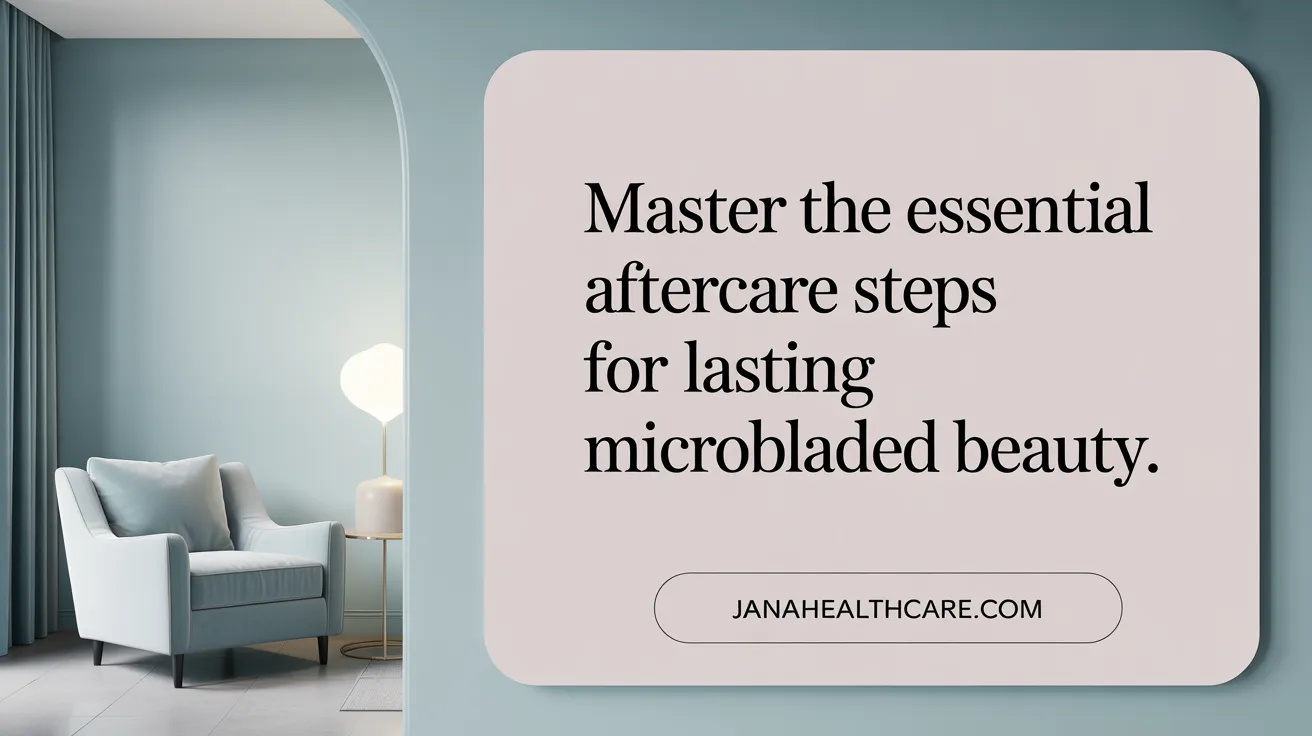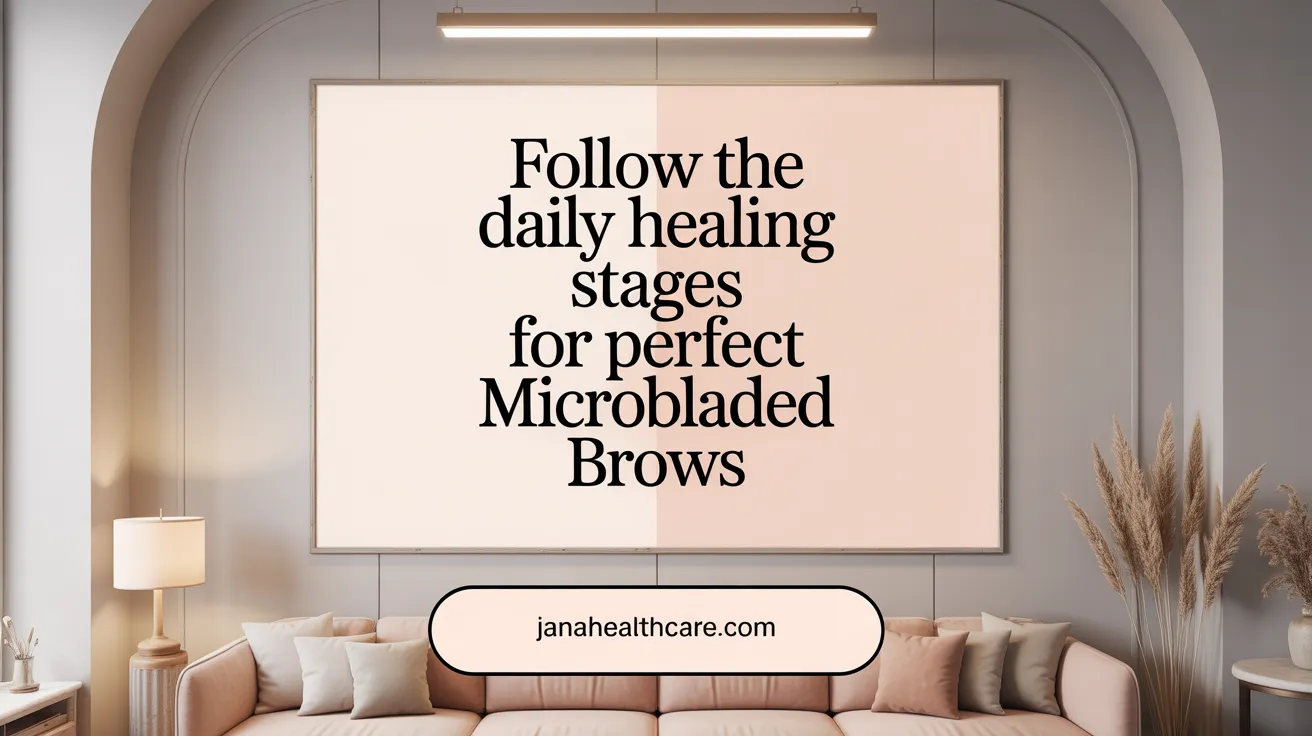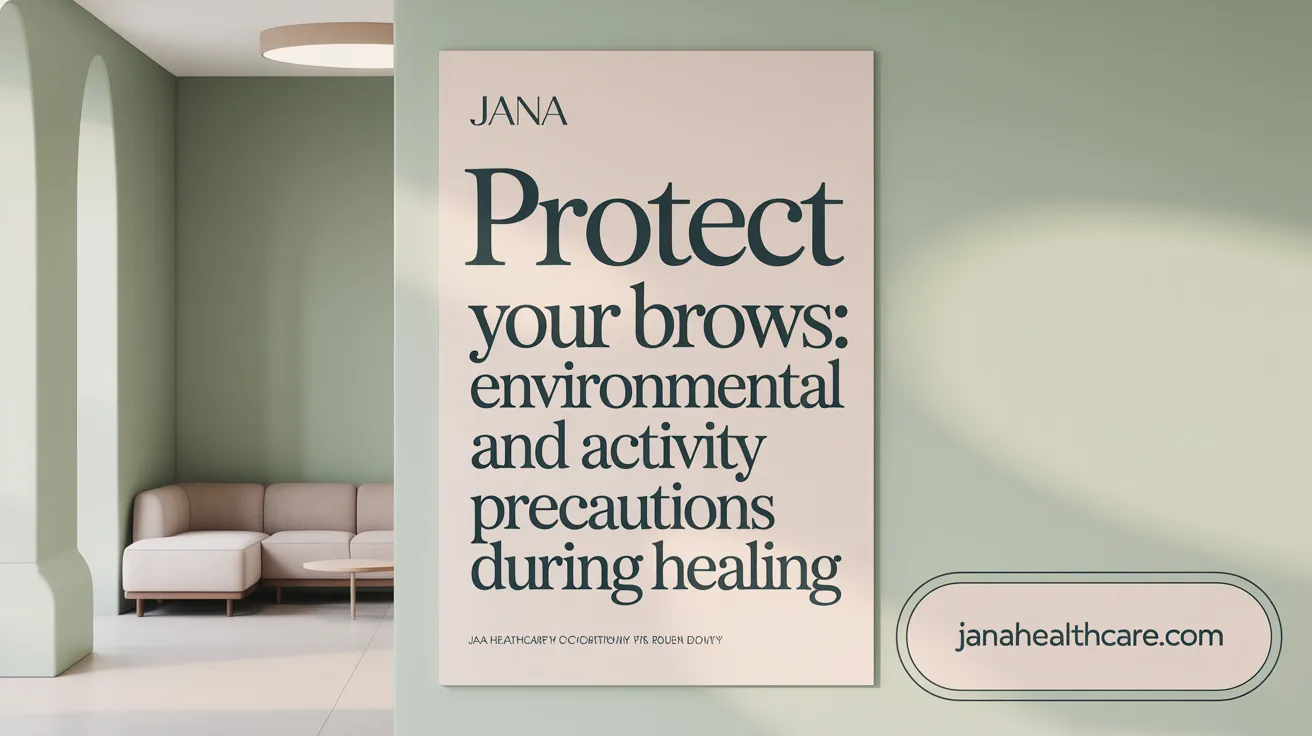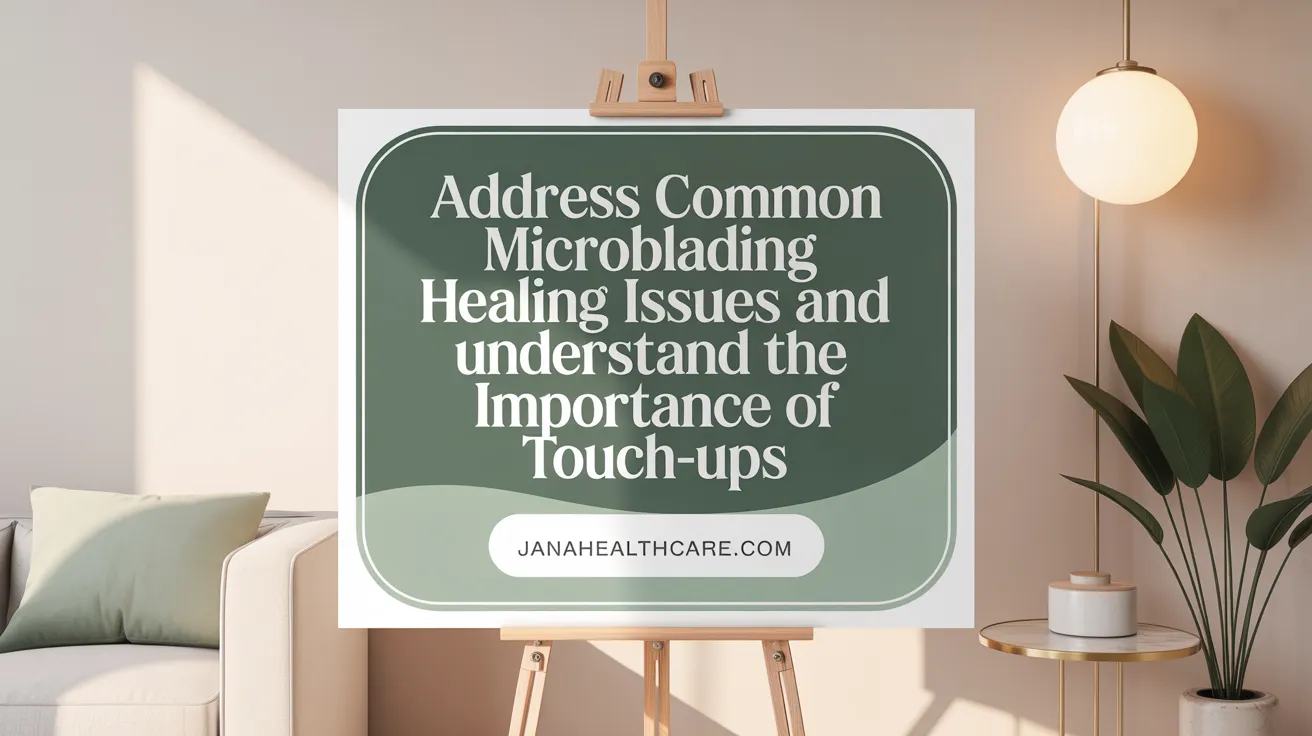Why Aftercare Matters in Microblading
Microblading offers a stunning semi-permanent solution for perfectly shaped eyebrows, but the secret behind impeccable, long-lasting results lies not just in the procedure itself but crucially in the aftercare. Following a meticulous aftercare routine ensures optimal healing, pigment retention, and the avoidance of complications. This guide explores everything you need to know about the microblading aftercare process, healing stages, product recommendations, environmental precautions, maintenance tips, and the vital role of touch-ups to keep your brows flawless and vibrant for years to come.
The Microblading Aftercare Process: Essential Steps and Best Practices

What is the microblading aftercare process, including key steps and best practices for healing and maintenance?
The microblading aftercare process is crucial for achieving the best aesthetic results, ensuring proper healing, and maintaining pigment longevity. Immediately after the procedure, the artist typically recommends keeping the brows clean and dry for the first 24-48 hours. During this period, gentle blotting with sterilized water and avoiding touching or scratching the treated area helps prevent infection and scabbing (Microblading aftercare instructions).
From day 2 to 10, daily cleaning is performed twice with mild antibacterial soap, such as Cetaphil, and water. It’s important to use only a small amount of ointment—about half a grain of rice—applied with a cotton swab to keep the area moist and promote healing. During this time, activities that induce sweating, swimming, hot baths, or sun exposure should be avoided (Microblading aftercare instructions; Post Care Instructions for Microblading). Chemical treatments like peels and harsh skincare products containing acids or retinol are also discouraged (Microblading aftercare instructions).
As the healing progresses, the brows may develop scabs and flakes, which must not be picked or peeled to prevent pigment loss or scarring. Once the scabs naturally fall off, usually around two weeks, it is vital to protect the area and continue to avoid excessive sun exposure. Applying a broad-spectrum SPF 30-50 on healed brows helps preserve pigment and color intensity (Sun protection after microblading).
The complete healing process generally takes between 4 to 6 weeks. During this period, the pigment might appear darker immediately after healing and lighter or uneven during peeling, but this is normal. A touch-up appointment around 6 weeks helps refine shape and color, making it look natural and polished (Microblading healing process). Proper aftercare, including avoiding exfoliation or facial procedures that could disturb the pigment, prolongs the durability of your microbladed eyebrows and keeps them looking fresh for years (Microblading aftercare tips).
Caring for Microbladed Eyebrows Before, During, and After the Procedure

Pre-procedure preparations and precautions
Proper pre-care is essential for achieving optimal results with microblading. Patients should avoid alcohol, caffeine, sun exposure, and skincare products containing Retin-A, acids, or exfoliants like AHA before the procedure. Wearing previously drawn brows or bringing an eyebrow pencil ensures accurate shaping during the session. If you have medical conditions such as diabetes, skin issues, or are on medications, consult your healthcare provider beforehand for clearance. For more detailed Microblading pre-care guidelines.
Preparing your skin and eyebrows helps minimize bleeding and sensitivity, leading to a cleaner, more precise application. It’s also advisable to avoid blood thinners, heavy alcohol consumption, and tanning to prevent issues during the procedure. See Microblading procedure overview and Microblading pre-procedure skincare tips.
Hygiene protocols during the procedure
Hygiene is a top priority during microblading. The technician should use disposable, sterile tools and follow strict sterilization standards. The work environment needs to be clean to prevent infections. Refer to Licensed microblading technicians and safety.
During the session, the technician will clean and mark your eyebrows carefully. They will use a fine needle to deposit pigment, mimicking natural strokes. Ensuring proper hygiene reduces the risk of complications. For more, see Microblading procedure steps and hygiene and Microblading sanitation and aftercare guidelines.
Post-procedure dos and don’ts
Aftercare is critical for proper healing and pigment retention. Avoid getting your eyebrows wet for at least 7-14 days. This includes avoiding swimming, saunas, hot tubs, and excessive sweating during this period. See detailed Microblading aftercare instructions and Avoiding water and makeup during healing.
Apply the healing ointment (like Aquaphor or CeraVe) exactly as directed—usually twice daily from day 4 onward—using a clean cotton swab. Do not scratch, peel, or pick at scabs or flakes, as this can cause pigment loss or scarring. Refer to Applying aftercare ointment for microblading and Managing itching and flaking after microblading.
Keep the area protected from direct sunlight and avoid applying make-up or heavy skincare products on or near the treated area for at least two weeks. Use a broad-spectrum SPF 30-50 after healing to prevent fading. More at Sun protection after microblading and Protecting microbladed eyebrows from sun.
Scheduling a follow-up appointment around 8-10 weeks after the initial microblading helps perfect the shape and color. Proper hygiene, avoiding irritants, and following your technician’s advice are the pillars of successful microblading care, ensuring your brows stay beautiful and natural-looking for years. See Microblading touch-up appointment and schedule and Microblading aftercare tips and timelines.
Understanding the Healing Stages: What to Expect Day by Day
 The healing journey after microblading typically unfolds over 4 to 8 weeks, passing through several distinct phases. Immediately following the procedure, your eyebrows may look darker, swollen, and tender. During the first 24 hours, a layer of lymph fluid forms, acting as a natural shield to protect the skin. Gently blotting excess fluid helps prevent scabbing.
The healing journey after microblading typically unfolds over 4 to 8 weeks, passing through several distinct phases. Immediately following the procedure, your eyebrows may look darker, swollen, and tender. During the first 24 hours, a layer of lymph fluid forms, acting as a natural shield to protect the skin. Gently blotting excess fluid helps prevent scabbing.
Days 3 to 5 mark the beginning of scabbing and flaking. It is normal for the brows to itch and for flakes to appear as the skin regenerates. During this time, avoid scratching or peeling to avoid removing pigment or triggering scarring.
Between days 8 and 10, the scabs will fall off, and the brows might seem lighter or patchy—often called the "ghost phase." This is a natural part of the healing process. At this stage, the pigment begins to settle and the true shade of your brows starts to take shape (Microblading healing stages).
From weeks 2 to 4, the pigment stabilizes further. The true color and final shape of your brows become visible as the skin fully heals. During this period, proper aftercare—such as avoiding water and sun exposure and refraining from harsh skincare products—is essential for optimal results.
Touch-up appointments, usually scheduled 6 to 8 weeks after the initial treatment, are vital for refining the shape, enhancing color, and ensuring long-lasting results. Following these stages and adhering to recommended aftercare routines will help achieve natural-looking, permanent results with your microbladed eyebrows.
Environmental and Daily Activity Precautions During Healing
 During the healing process after microblading, it is crucial to take certain precautions to protect the integrity of your new brows. Keeping the area dry is one of the most important factors; this means avoiding water contact, including bathing, swimming, or any activity that causes excessive sweating for at least 10 to 14 days. Moisture can cause the pigment to fade or blur, and wet conditions may lead to infections. For detailed guidelines, see Microblading aftercare instructions and Microblading aftercare guide.
During the healing process after microblading, it is crucial to take certain precautions to protect the integrity of your new brows. Keeping the area dry is one of the most important factors; this means avoiding water contact, including bathing, swimming, or any activity that causes excessive sweating for at least 10 to 14 days. Moisture can cause the pigment to fade or blur, and wet conditions may lead to infections. For detailed guidelines, see Microblading aftercare instructions and Microblading aftercare guide.
Protecting your skin from sun exposure is essential to maintain the pigment's color and prevent fading. Once the area has healed, applying a broad-spectrum sunscreen with SPF 30–50 can help preserve the results. During the initial healing phase, it's best to avoid tanning beds, direct sunlight, and UV exposure altogether. More information is available at Sun protection after microblading and Post-microblading skincare guidelines.
It's equally important to avoid applying any makeup, creams, or irritants on the eyebrows until fully healed. This includes products containing acids, retinol, or exfoliants, which can disturb healing and affect pigment retention. Refer to Microblading do's and don'ts and Microblading skincare products to avoid for specifics.
Activities that involve heavy physical exertion, such as intense workouts, hot baths, saunas, steam rooms, or heavy household cleaning, should be avoided during the first 10 to 14 days. These activities increase blood flow and sweating, which can interfere with healing and lead to pigment loss or scabbing. For a comprehensive overview, see Activities to avoid after microblading and Microblading healing timeline and care.
Gentle cleaning is recommended using mild antibacterial soap and sterile tools. Avoid harsh chemicals, exfoliants, or abrasive scrubs that can damage healing skin. Also, refrain from touching, scratching, or peeling scabs to prevent scarring, uneven pigment, or removal of the work. For detailed cleaning instructions and aftercare routines visit How to care for microbladed eyebrows and Using antibacterial soap for microblading.
Overall, these precautions help ensure proper healing, minimize risks like infection or pigment migration, and support the longevity of your microbladed brows, leading to a more natural and lasting result. Consider reading Microblading aftercare tips and Maintaining microblading results for additional care recommendations.
Recommended Products and Maintenance Tips for Long-Lasting Results
Best ointments and moisturizers for aftercare
Selecting the right ointments and moisturizers is essential to support optimal healing and pigment retention. Recommended products include fragrance-free, non-irritating options such as Aquaphor, CeraVe Healing Ointment, or specialized aftercare balms designed for microblading. These help keep the area moist, prevent scabbing, and promote skin regeneration. Applying a tiny amount, about the size of half a grain of rice, twice daily using a clean cotton swab ensures consistent protection.
Avoiding harmful skincare ingredients
To preserve the longevity of your microbladed eyebrows, it’s important to steer clear of skin care products containing alcohol, fragrances, acids, or exfoliants. Ingredients like retinol, glycolic acid, benzoyl peroxide, and other harsh chemicals can accelerate pigment fading and cause uneven results. During healing and beyond, avoid applying these to the brow area and opt for gentle, hydrating formulations (Microblading aftercare instructions).
Sun protection recommendations
Sun exposure is one of the main factors contributing to pigment fading. Always apply a broad-spectrum SPF 30-50 sunscreen on your eyebrows once they are fully healed. Wearing hats or sun protective clothing can further shield the area. Consistently protecting your brows from UV rays during the long-term maintenance phase minimizes discoloration and ensures your microbladed eyebrows stay vibrant for as long as possible (Sun protection after microblading).
Touch-up timing and importance
Regular touch-ups are crucial in extending the lifespan of your microbladed brows. Usually scheduled every 12-24 months, these sessions help refine shape, reintroduce pigment, and address fading or unevenness. Without timely touch-ups, natural fading will occur, diminishing the initial enhancement. Consistent maintenance ensures the brows stay looking natural, defined, and fresh (Microblading touch-up appointment).
Long-term maintenance strategies
Beyond immediate aftercare, adopting a long-term maintenance routine helps maximize results. Keep your skin well-hydrated from within by drinking plenty of water and eating nutritious foods (Hydration and nutrition for microblading healing). Protect your eyebrows from prolonged sun exposure and avoid harsh skincare products. Regularly (every 1-2 years) visiting your technician for touch-up sessions ensures your eyebrows remain sharp and vibrant. Additionally, always use sun protection and avoid unnecessary chemical treatments or exfoliation near your brows to preserve the pigment and shape (Microblading aftercare tips).
Common Healing Issues, Complications, and the Role of Touch-ups

What common issues and potential complications can occur during the microblading healing process, and how should they be addressed?
During the healing journey, some clients may experience issues such as excessive scabbing, which can be prevented by following proper aftercare routines like keeping the area moisturized and not peeling the scabs prematurely.
Infections are a risk if hygiene protocols are not strictly adhered to. Signs of infection include swelling, redness, warmth, pus, and increased pain. If any signs of infection or unusual swelling occur, seeking prompt medical advice is essential.
Allergic reactions, although rare, can manifest as irritation, redness, swelling, or granulomas. A patch test before the procedure helps identify sensitivities to pigments or topical products.
Uneven pigment retention or fading can happen if aftercare instructions are not properly followed or if the technician was not experienced. In some cases, there may be patchy areas or color inconsistencies.
Hyper or hypopigmentation, scarring, or keloid formation may occur, particularly in individuals prone to abnormal scar tissue. Avoiding sun exposure and keeping the area protected accelerates healing and minimizes these risks.
Providing proper guidance during the healing process, avoiding harsh skincare products, and refraining from activities like swimming or excessive sweating are crucial steps.
Addressing problems early by consulting your technician or a healthcare professional ensures appropriate treatment and prevents long-term complications.
Addressing allergic reactions and infections
For allergic reactions, switching to hypoallergenic pigments and topical soothing agents can help, but severe cases require medical treatment. It's vital not to scratch or pick at the area.
Infection management involves keeping the area clean, avoiding contaminated water, and using prescribed medications if necessary. Persistent or worsening symptoms should prompt immediate professional attention.
Importance of professional touch-up sessions
Since microblading pigments fade over time—typically after 12-24 months—scheduled touch-ups are vital to maintain color vibrancy and shape.
Touch-ups help correct uneven fading, restore pigment density, and refine the overall look, ensuring long-lasting satisfaction.
Most professionals recommend a follow-up 6-8 weeks after the initial procedure, with additional maintenance depending on individual skin type, lifestyle, and the aging process.
Maintaining results and preventing complications
Maintaining results involves diligent aftercare: avoiding excessive sun exposure, using high-SPF sunscreens, avoiding harsh skincare ingredients like acids and retinoids, and keeping the area moisturized.
Avoiding activities that cause excessive sweating or trauma to the area shortly after healing preserves the pigment and shape.
Regular follow-up appointments align with proper lifestyle habits and aftercare, thus extending the longevity of the microbladed brows and avoiding unnecessary complication risks.
Achieving and Maintaining Stunning Microbladed Brows
The journey to flawless microbladed eyebrows extends beyond the treatment chair, heavily relying on diligent aftercare and maintenance to ensure beautiful, lasting results. Understanding the healing stages, adhering to protective measures, and using recommended products are foundational for optimal pigment retention and skin health. Equally important is recognizing and addressing complications early and committing to scheduled touch-up appointments to refine and prolong your perfect brows. By embracing these expert aftercare practices and precautions, you can enjoy the full benefits of enhanced, natural-looking eyebrows that stand the test of time.
